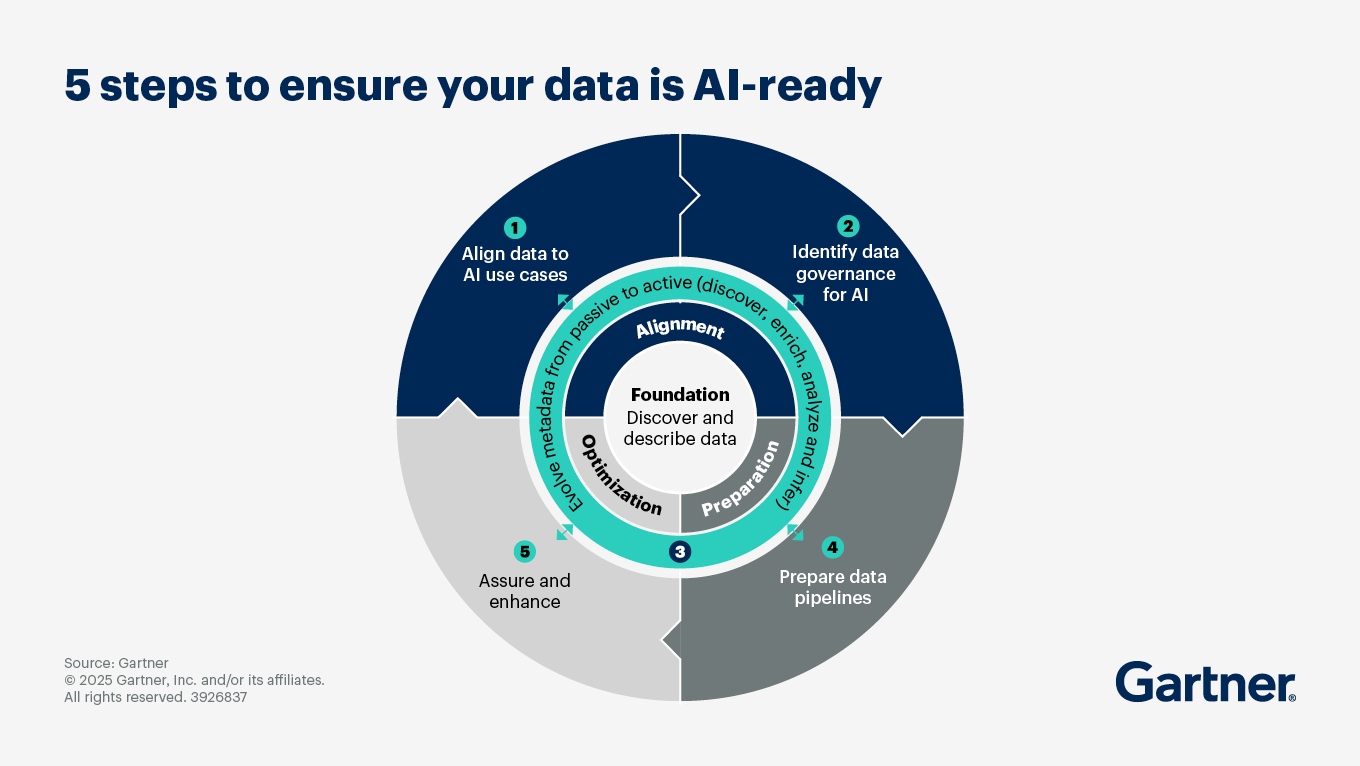Gartner constantly interacts with CIOs through everything from anonymous polling to 1:1 advisory sessions. Here’s what we’re hearing from them.
- Gartner client? Log in for personalized search results.
Key CIO challenges range from smarter spending to maximizing business value
Rather than rely on formal polling, the Gartner CIO Report draws on the inquiries we receive from our CIO clients every day and their interactions with our analysts and executive partners (EPs). This qualitative reporting on what matters to CIOs can help you identify your own challenges and determine next steps.
The CIO Report surfaces five common CIO pain points for leaders in 2025:
- Growth optimization
Maximizing business value
See Gartner research in action at our CIO conferences and events.
CIO challenges hinge on application modernization, data and analytics, optimization, delivered business value and cost management
Gartner EPs are former CIOs who work directly with clients to develop and hone specific strategic initiatives and execution plans. Most often, they are asked:
1. How do I evolve and optimize the operating model for efficiency and growth?
Today’s CIOs are under enormous pressure to ensure the current IT operating model supports future growth and innovation. However, 62% of strategy leaders noted an overburdened legacy operating model cannot support current and future strategic objectives and plans.
Effective CIOs understand the need to match the IT operating model to company expectations in order to remain — or become — trusted business partners. CIOs that maintain an operating model too narrowly focused on internal IT projects will struggle to deliver on broader strategic business goals.
Today’s executive leaders expect CIOs to run IT like a business, which requires a shift from task orientation to decision execution. A service-optimizing operating model will enable these changes and drive better business growth.
Talk to a Gartner Executive Partner. As a client, you can work directly with an EP mentor. Learn more today.
2. How do I use data, analytics and AI to deliver better business value?
Organizations with AI-ready data report a 26% improvement in business outcomes. However, 65% of organizations either don’t have AI-ready data or are unsure if they have AI-ready data.
Gartner expects through 2026, those organizations that don’t enable and support their AI use cases through an AI-ready data practice will see over 60% of AI projects fail to deliver on business SLAs and be abandoned.
Proving AI readiness of the data will be based on aligning the data to the use case, qualifying the use and governing the data contextually.
3. How can I effectively modernize the application portfolio?
Fifty-nine percent of applications in an organization face technical and business fit issues, such as outdated technology, scalability limitations and inefficient workflows. Legacy systems are not only expensive to maintain, but they may create security vulnerabilities that are difficult to address. Modernizing applications can significantly improve their performance and efficiency.
There are five approaches to modernization, and organizations must decide which is the best fit in terms of risk, cost and impact.
Rehost or “lift and shift”
Replatform or “lift and reshape”
Rearchitect
Rebuild
Replace or “drop and shop”
4. How can I shift spend management from tactical to strategic?
Just 26% of CIOs and technology executives rate themselves as “expert” in strategically managing IT budgets while balancing cost, value and risk at an enterprise level. But effective budget management is key to being a successful CIO.
In fact, Gartner predicts through 2028, CIOs who implement ongoing strategic cost optimization will be 65% more successful in elevating their strategic contribution to their organizations’ mission.
Savvy CIOs know that simply focusing on “spend reduction” is not a long-term strategic solution. Instead, CIOs should seek to reduce costs proactively to deliver savings, improve the performance of current resources and harvest realized savings. Strategic cost optimization enables CIOs with the ability to reallocate resources to initiatives that drive business growth and innovation and invest in digital transformation to keep the organization competitive in the digital age.
5. How do I deliver continuous value on technology investments?
The business has high expectations on ROI for technology investments — especially those in AI. C-suite executives often see a lot of funding going to IT, and struggle to understand how the broader organization is benefiting from those investments.
Today’s CIOs are under pressure to answer one key question: How do I communicate the business value of technology investments to my stakeholders?
The effectiveness with which CIOs measure and communicate the business value of IT will directly influence whether the business sees IT as a business partner or a cost center. CIOs must be able to tie the benefits of technology investment directly back to what stakeholders value.
Stakeholders want to know how IT enables the strategic agenda and how IT's activities benefit the broader organization. In turn, CIOs must make IT relevant to the desired outcomes of the stakeholders and articulate the business outcomes of the technology investment.
Missed our last insights? Review the Q1 2025 CIO Report and see how it connects to today’s trends, challenges and opportunities impacting CIOs.
Are you a CIO or IT leader at a midsize enterprise?
See how your peers are navigating AI adoption, vendor decisions and evolving business demands — with tools tailored to your role:
Explore our resources for midsize enterprises
Check out a curated list of Gartner’s most popular research being utilized by your peers
Attend a Conference
Experience CIO and IT Executive conferences
With exclusive insights from Gartner experts on the latest trends, sessions curated for your role and unmatched peer networking, Gartner conferences help you accelerate your priorities.
Gartner CIO Leadership Forum
Phoenix, AZ

Drive stronger performance on your mission-critical priorities.
